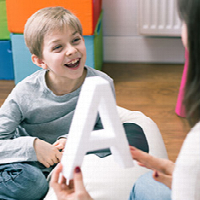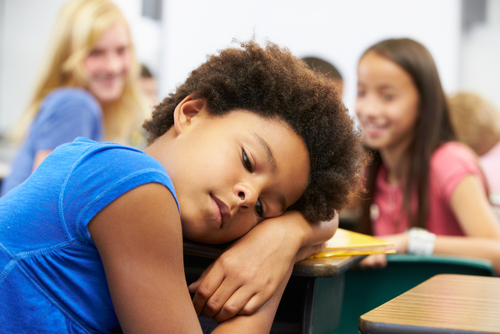As a parent, guiding a child through a brain injury may be a daunting experience. Oftentimes, becoming better informed of what to expect may lessen your anxiety and help lead your child (and family) on the path to recovery. Although severe brain injuries, some resulting in a coma or need for neurosurgical care, do occur, approximately 75-80% of all brain injuries are considered mild, and most children can fully recover from them without residual problems. Mild brain injuries are sometimes interchangeably called concussions, particularly in sports-related settings. A concussion is a brain injury where the brain experiences a rapid or a forceful movement due to either a physical blow to the head or a “whiplash” type of movement without a physical hit. Because the injury is due to the movement of the brain in the skull, protective equipment, such as helmets, do not necessarily prevent a concussion from occurring. Helmets are important in that they provide support for the neck and musculature that help support the skull and thus the brain; they may also prevent or reduce skull or other fractures. But acknowledging their limits in protecting concussions is important so that they do not provide young athletes with a false sense of protection.
Concussion symptoms can include physical symptoms such as headaches, sound/light sensitivity, and nausea/vomiting; emotional symptoms such as feeling anxious or depressed, tearfulness, and irritability; cognitive symptoms such as memory and concentration difficulties, slowness, and fogginess; and/or sleep problems.A large majority of children and adults fully recover after a single, uncomplicated concussion if they are given some initial rest to heal, and if they work up to their normal routines gradually thereafter.For most adults, recovery takes approximately one week, while in children and adolescents, recovery could take anywhere from two to three weeks.
It is important to identify a concussion when it occurs and remove an athlete from the risk of additional head injuries during the period of recovery, as a second injury while the brain is in a state of repair can prolong symptoms and complicate outcomes. Historically, clinicians and caregivers have erred on the side of extreme caution and have interpreted “rest” as full disengagement from all stimulation, including school, devices, and social activities.Although this recommendation has been made with good intentions, its ramifications have actually had the opposite effect in regards to treatment, which resulted in prolonged symptoms.Imagine asking a teenager to give up their devices, refrain from their social and physical activities, and sit in their dark room, only to come out when they are feeling less irritable!
While physical rest for a day or two after an injury is advisable, the current consensus on effective treatment approaches encourages proactive efforts.These efforts include returning to as much normalcy in a child’s routine as possible, including going back to school (with accommodations if necessary), participating in some physical activity (walking, jogging, and eventually non-contact practice or sport), and socializing. Only situations and activities that would put the child at risk for another injury, such as contact sports, should be avoided.Symptoms can be monitored during these activities and if they are exacerbated, efforts can be made to minimize them – though no one has suffered a concussion from too much homework or a boring lecture!
There are published guidelines (sometimes sport specific) a specialist can provide to help your student return back to their normal routine in a safe and monitored, step-by-step fashion.It is advisable for students to return to school and feel functional in a classroom environment before they are cleared to return to their athletic environment.If a student has difficulty with school-related activities, their counselor or clinician can help derive a set of accommodations that will help them ease back into school, including rescheduling strenuous or high-stake exams until a later date, receiving extra time to complete work, only completing essential work to avoid a pile-up of make-up work— which in and of itself can create stress— taking rest breaks as needed, and a gradual return to a full day load if a student is struggling initially.
When symptoms of a concussion do not improve over time, or when a patient is experiencing prolonged symptoms, consulting with a specialist to determine contributing factors will help target treatment efforts.Factors that often contribute to complicated or prolonged outcomes include a history of multiple injuries (there is no magic number, and the number varies depending on individual factors), injuries occurring too close together (when a second injury occurs before one is fully healed from the first), a history of psychiatric problems (anxiety and/or depression), history of learning difficulties (AD/HD or other learning or processing disorders), or a family history of migraines.The presence of one or more of the above factors, even if previously undiagnosed, can complicate the clinical picture, whereby symptoms that have always been present (such as inattention) are now under a microscope and attributed to the injury, or are exacerbated by an injury.
Gender also plays a role in the prevalence of concussions.Although more males than females experience concussions based on incidence rates, this difference is due to exposure; males participate in high-risk sports or activities more than their female counterparts. However, when looking at rates for concussion in males and females who play the same sport (e.g., soccer), females tend to have a higher rate of concussion.Although researchers have not identified the underlying reasons for such gender effects, they have highlighted several possibilities, including hormonal differences between the sexes, the weaker neck musculature of females (which perhaps puts them at greater risk of a concussive type injury), or social and cultural factors where females simply are more willing to report symptoms.It is likely a combination of the aforementioned reasons contributing to the gender differences observed.
Sports play a significant role in our culture, and engaging in physical activity has many critical benefits, especially for young people.Aside from fostering physical strength and social interactions, engaging in sports improve cognitive and academic performance, improve mood and self-esteem, and teach a myriad of life lessons in navigating the many twists and turns young people will experience in their lives.In fact, in one study of young children, those who had longer recesses and shorter classroom periods performed better on standardized academic exams.Further, chronic health conditions (such as heart disease and diabetes) that are secondary to obesity and diet are a much bigger threat to today’s youth and their long-term health outcomes than the consequences of a concussion.Sports are here to stay, and their benefits far outweigh their risks.But as parents, administrators, and coaches, it is imperative that we equip ourselves with the cutting-edge knowledge and research to accurately identify concussions when they do occur, to treat injured athletes using knowledge from best practices, and to tailor policies in practice and coaching to protect athletes to the extent possible. As of 2018, all 50 states have laws that require student-athletes with suspected concussions to be removed from play immediately, and to not return until they are cleared by a professional. Policies such as these will help ensure that student-athletes are minimally affected by concussions, and that they receive the care they need to ensure a speedy and healthy recovery when injuries do occur.Our macro-cultural and micro-familial discussions with young people about concussions, their risks, and the importance of speaking up when they or their peers appear impaired are critical. No athlete should feel pressure to keep quiet about an injury to avoid looking weak or disappointing a coach or a parent.Doing so can only put themselves or their peers in harm’s way, resulting in further lost play time or unnecessary complications related to an injury.
The CDC has several resources for parents/caregivers, schools, and coaches on brain injury and concussion identification and management. Visit https://www.cdc.gov/headsup/index.html for more information.
Author:
Dr. Talin Babikian is a board-certified clinical neuropsychologist and Assistant Clinical Professor in the Division of Child and Adolescent Psychiatry at the David Geffen School of Medicine at UCLA. She is also Associate Director of BrainSPORT (https://www.uclahealth.org/brainsport) at UCLA, an inter-departmental and multi-disciplinary program for identifying and treating brain injuries - including concussions - in youth and professional athletes, where she oversees the Sports Neuropsychology Fellowship training program.She is also in private practice as a child/adolescent neuropsychologist in Los Angeles: www.talinbabikian.com.








